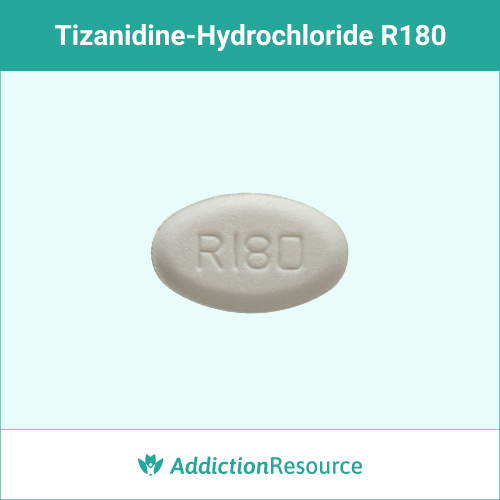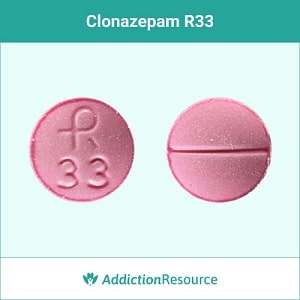Have you found a medicine at home but are unsure what it is? This is a common situation in most households, so how do you identify an unknown pill?
You can identify a medication drug based on size, shape, and color. However, these pill’s attributes only work if you’re already familiar with the drug. If you’ve never seen that capsule or tablet before, is there any way to confirm what it is?

You can identify medication by imprint code—a unique combination of numbers, letters, or symbols on the pill. Most drugs have imprint codes that distinguish them from others, even if they appear similar.
Learn more about using a pill identifier by imprint code in this guide, and be 100% sure about the pill on your hand.
Table Of Contents:
What is an Imprint Code on a Prescription or OTC Drug?
Most prescription and over-the-counter drugs (in tablet and capsule form) approved by the Food and Drug Administration (FDA) have an imprint code that serves as their unique identifier from other medication drugs.
An imprint code is a marking you can see directly on the drug. This marking can be a combination of numbers, letters, or symbols that identify the drug based on the FDA’s database of legal medications. Some pills might include other information in the imprint code, such as the drugmaker company, national drug code, logo, or the brand name of the pill itself.
For example, a white, elliptical tizanidine 4 mg tablet manufactured by Par Pharmaceutical Inc. has an imprint code of “R180” on the surface of the tablet. The code “R180” tells us that this drug is a 4 mg tizanidine from the company, as mentioned earlier. It sets apart the drug from other tizanidine drugs with different codes, sizes, shapes, and colors.
The FDA requires all solid oral medication drugs (medicines you can take by mouth) to have clear imprint codes unless the drug is exempted based on Section 206.10 of Title 21 of the Code of Federal Regulations (more on that later).
Different Forms of Drug Imprint Codes
A drugmaker can add a pill identifier by imprint code in three ways: embossing, engraving, or debossing.
- Embossing: The imprint code is raised above the surface of the tablet or capsule.
- Engraved: The imprint code is cut from the surface of the tablet or capsule after it has been completed.
- Debossed: The imprint code is marked below the surface of the tablet or capsule.
Can Two Different Drugs Have the Same Imprint Code?
Yes, several drugs that are completely different from each other may have the same marking. For instance, different drugs might share the same single letter or number on their surface. However, when drugs have identical markings, their size, shape, and color are unique, making them easily identifiable.
Why Identify Pills By Imprint Code?
The primary purpose of an imprint code is to determine a particular medication drug. But if it’s possible to identify a drug by its appearance alone, why did the FDA require imprint codes?
Here are some reasons:
- Identifying drugs through physical attributes can be inaccurate. The physical attributes of a pill can be interpreted in different ways. For instance, a person might interpret the color or size of a pill differently from what was mentioned to him by the physician.
- Prevent medication errors. Pill identifiers with imprint codes can prevent the intake of the wrong medication. For instance, if you find a stray pill in your medicine kit and are unsure what it is, you can refer to the imprint code to verify it.
- It helps in setting apart drugs with identical appearance. It’s also possible that two types of medicines that look very similar are mixed in a container, making it difficult to set them apart. This is extremely dangerous as someone might accidentally consume the wrong drug that looks like his prescription drug. However, by referring to imprint codes, it becomes easier to distinguish between the drugs, preventing potential misuse.
- Quick identification of drugs during emergencies. Imprint codes are also instrumental in saving someone who is accidentally poisoned or overdosed. The codes will enable swift identification of the overdosed drug, allowing the healthcare professional or first-aider to provide immediate antidote and medical solutions.
- Can provide further information about the drug. Pill identifier by imprint code can also provide information about the drug’s active ingredients and dosage strength. This ensures the user that the drug he bought from the pharmacy matches the prescription provided by his doctor. You can’t easily do this “verification” if you refer only to the name of the drug and its physical attributes.
- To avoid drug counterfeiting, imprint codes are difficult to fake as they are finely debossed, embossed, or engraved on the pill’s surface. This makes counterfeiting legal drugs almost impossible.
What Does It Mean When a Pill Has No Imprint Code?
There are four potential reasons why a pill has no imprint code: it can be a vitamin or supplement, it’s an illegal drug, it’s not an FDA-approved drug, or it’s included in the FDA’s exemption drugs.
Vitamins and supplements: Pills that are vitamins, dietary supplements, or herbal pills are mostly not regulated by the FDA, so they are not required to have imprint codes.
Illegal drug: Illicit drugs that can be consumed orally, such as methamphetamine, ecstasy, or ketamine, have no imprint code for the sole reason that they are forbidden by the law.
Foreign medication drug: Pills outside the United States might have no imprint code. It does not mean that they are illegal drugs. It’s possible that the country of origin doesn’t require identifier markings. As much as possible, refrain from taking foreign medication drugs as they are typically not examined by the FDA.
Drugs exempted according to the FDA Code of Federal Regulations Title 21: Section 206 of CFR listed drugs exempted from the imprint code requirement. Here are some of them:
- Drug products enumerated in Section 505(i) of the CFR that are intended for clinical investigation use.
- Drugs intended for laboratory bioequivalence study.
- Drugs with size, shape, texture, and other physical attributes that are impossible to imprint. For instance, a pill that is too small or fragile and potentially damaged due to imprinting can be exempted.
- Drugs used only in a controlled healthcare setting (e.g., physician’s office or healthcare facilities).
How To Identify a Drug Using Imprint Code?
To identify an unknown pill, take note of its imprint code, size, shape, and texture. Afterward, use these details in a pill identifier tool such as the one in this Klonopin pill identifier and carefully review the results provided. From here, you can identify what pill you have.
If you’re still unsure what drug you have, talk with your doctor or a local pharmacist.
What are Some Trusted Pill Identifier By Imprint Code
Here are some reliable pill identifiers by imprint code you can refer to in case you have an unknown medicine.
US FDA Division Staff: This can help you ID drugs based on physical attributes such as color, size, shape, and markings. You have to send them an email at [email protected]. However, this pill identifier option is for non-emergency purposes, as it may take a while before you receive a response.
FDA Poison Control Center: Call 1-800-222-1222 to ID drugs during emergencies.
For educational purposes, you can also refer to our pill identifiers with accurate drug images. We have:
- Tizanidine pill identifier
- Suboxone pill identifier
- Oxycodone pill identifier
- Naproxen pill identifier
- Robaxin pill identifier
- Hydrocone pill identifier
- Lioresal (Baclofen) pill identifier
- Percocet pill identifier
- Klonopin pill identifier
- Xanax pill identifier
- Meloxicam pill identifier
- Valium pill identifier
You can also call 911 during an emergency, such as overdosing or poisoning due to an unknown medication drug.
Pill Identifier By Imprint Code Can Save Lives
Imprint codes are an essential component in medication drugs. It can help you identify drugs in case they’re mixed or if you’re unsure if the pharmacist gave you one that matches your doctor’s prescription. The markings can also help you during emergencies such as poisoning or overdosing by quick identification of the pills.
More importantly, the absence of imprint codes might give a hint that a person is using an illegal substance. Knowing this can save someone from substance abuse and addiction by giving them immediate medical attention.
It’s never too late to help people suffering from drug addiction. As with other disease, addiction is curable. With the support of family and loved ones and a specialized therapy approach, an addicted person can return to normalcy.
Call 911 in case of a drug-related emergency. You can also connect with Addiction Resource to help you find specialized rehabilitation and treatment centers to beat addiction.
Our free and confidential treatment hotline is open 24/7: call (800) 913-1755 today.
Page Sources
- National Archives: Code of Federal Regulations. PART 206—IMPRINTING OF SOLID ORAL DOSAGE FORM DRUG PRODUCTS FOR HUMAN USE - Retrieved on february 05, 2024
- US FDA: CFR - Code of Federal Regulations Title 21 - Retrieved on february 05, 2024
- US FDA: Drug Identification - Retrieved on february 05, 2024

 Authored by
Authored by  Reviewed by
Reviewed by 

